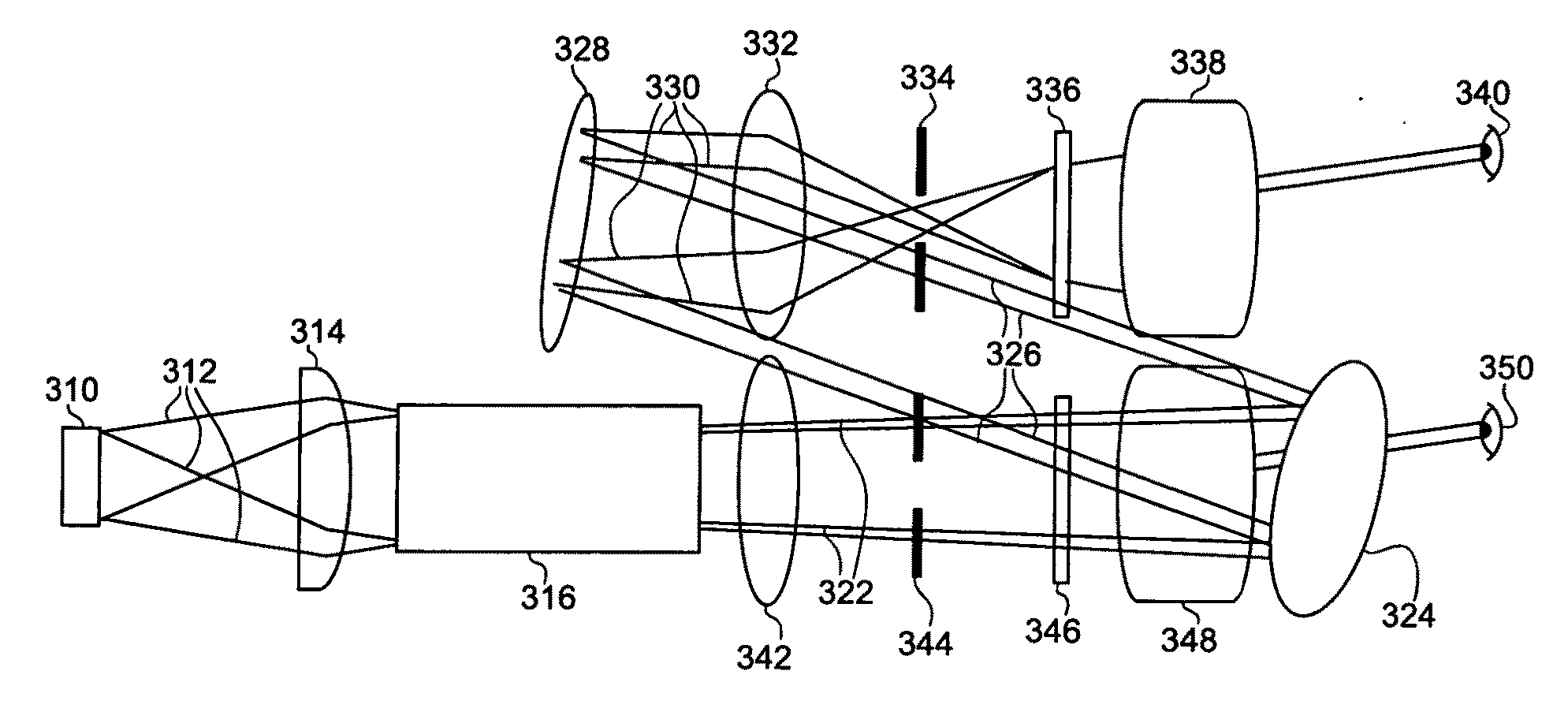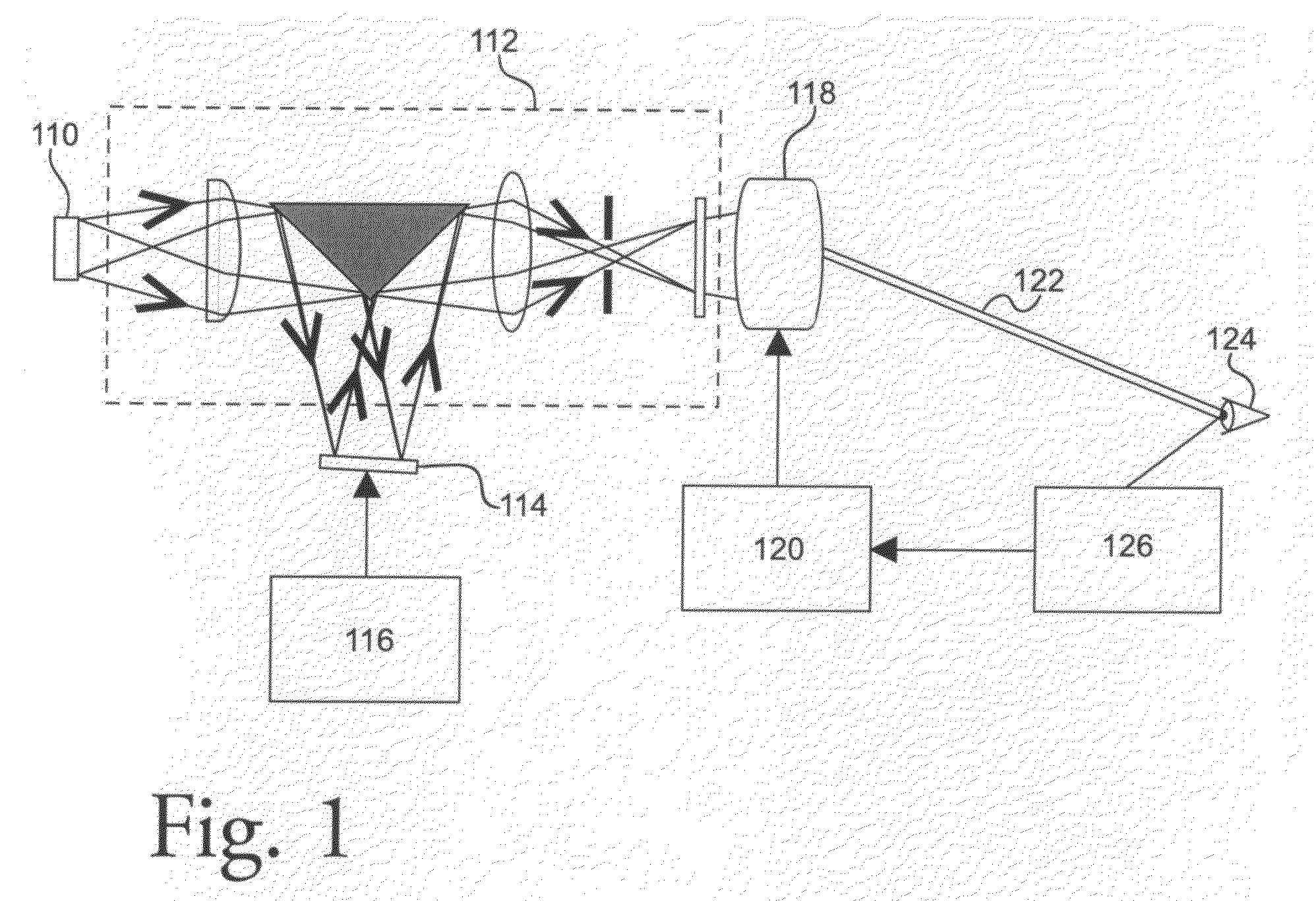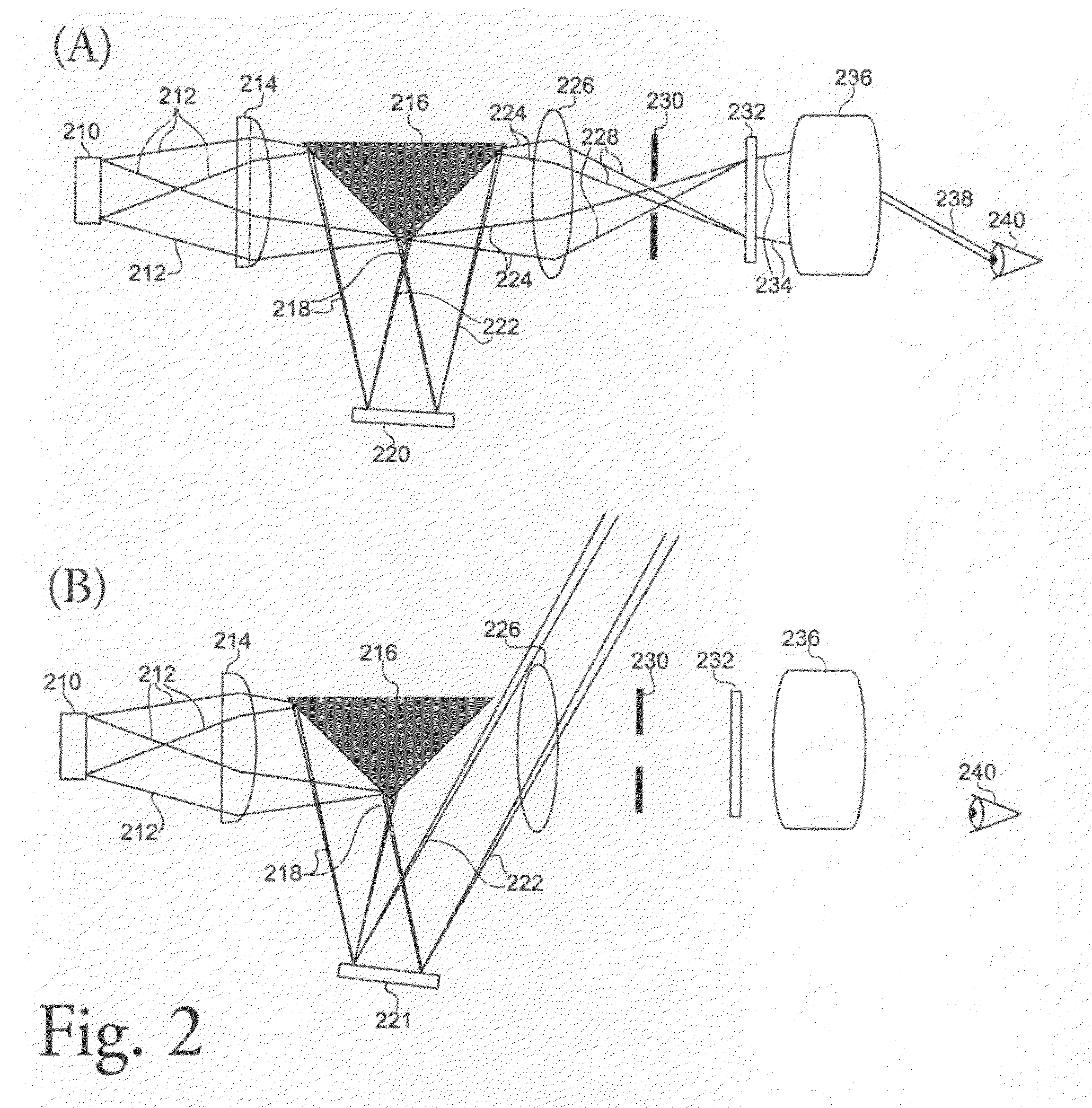Pupil scan apparatus
a scanning apparatus and pupil technology, applied in the field of pupil scanning apparatus, can solve the problems of double image, inability to achieve stereopsis, eye strain, discomfort, etc., and achieve the effect of less sensitive, high performance and greater efficiency
- Summary
- Abstract
- Description
- Claims
- Application Information
AI Technical Summary
Benefits of technology
Problems solved by technology
Method used
Image
Examples
Embodiment Construction
[0051]The invention discloses an apparatus and method by which an image is projected to pupils of an observer preferably covering only areas occupied by the pupils and tracking the areas occupied by the pupils such as to provide continuous display of the imagery to the observer. The method is to dynamically control the direction of light into sub-apertures selected by an eye tracking device. By imaging selectively into the sub-apertures where the eye pupils are temporally located instead of imaging into a generally large area the disclosed apparatus is power efficient and exclusive because the projected images are covert. This method is applicable to most biocular displays, for instance but not limited to “see through” systems, which overlay imagery over real world scenes and where geometrically precise projection is critical.
[0052]Human eye pupils have a diameter varying between 4 and 7 mm, depending on the magnitude of background light, direct illumination and psychological-physio...
PUM
 Login to View More
Login to View More Abstract
Description
Claims
Application Information
 Login to View More
Login to View More - R&D
- Intellectual Property
- Life Sciences
- Materials
- Tech Scout
- Unparalleled Data Quality
- Higher Quality Content
- 60% Fewer Hallucinations
Browse by: Latest US Patents, China's latest patents, Technical Efficacy Thesaurus, Application Domain, Technology Topic, Popular Technical Reports.
© 2025 PatSnap. All rights reserved.Legal|Privacy policy|Modern Slavery Act Transparency Statement|Sitemap|About US| Contact US: help@patsnap.com



